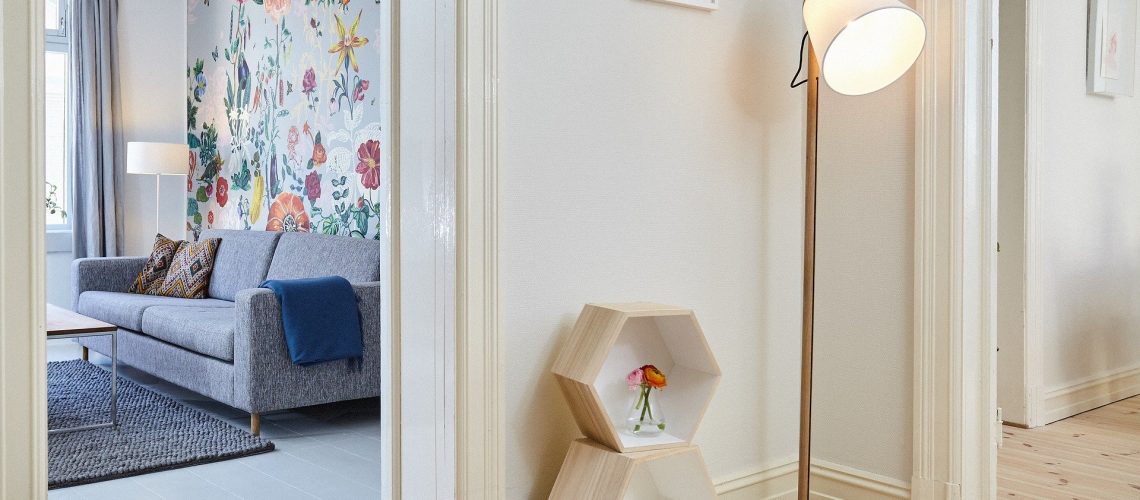Baseboards are the wooden or vinyl boards that cover the bottom part of the interior walls. Also called skirting boards, their purpose is to conceal the joint of the floor and the wall surface.
In interior painting projects, baseboards are usually the part of the room you paint last. This is because drops of paint from your brush or roller may fall on them while you’re painting the other parts of the room.
Even the most experienced painters observe the same process – they work on the skirting boards only after the ceiling and walls are painted.
Painting your baseboards last is also all about saving time. If you do them first, you are most likely going to re-do them or at least, do some touch-ups later on to remove or hide paint splatters.
Two Ways of Painting Baseboards
You have two options when painting baseboards – paint them in place or remove them before painting.
Painting baseboards in place is the easier way as it won’t require additional work. You do not have to allot time for removing the boards and putting them back. However, prepping and painting the surface can be physically challenging as you would have to sit on the floor or kneel while working.
Meanwhile, if you prefer to remove the baseboards, you have to manage your time well. Detaching and attaching the boards may look easy, but it is not especially if it is your first time doing it. Due to the complexity of the task, this approach is often not recommended for DIYers as they may end up permanently damaging the skirting boards.
While this method is time-consuming, it eliminates other concerns like taping, masking and the need to paint carefully. Furthermore, removing the baseboards before painting them often results in a beautiful finish. This is why some people prefer this method.
In case you choose this method, just make sure that you know how to properly detach and attach the baseboards; otherwise, you’d end up spending on replacements.
Steps in Painting Baseboards
So, how do you paint skirting boards? Our guide below will teach you how to properly paint baseboards in place.
Prep the Surface
Begin by cleaning the baseboards. Since they are at the lowest part of the wall and adjacent to the floor, these boards usually accumulate a lot of dirt and grime.
You can use soapy water or Trisodium Phosphate (TSP) and sponge for this task. Scrub the areas vigorously to remove dirt, grime, grease, soot and even chalked paint. Make sure you cover all areas, especially the horizontal surfaces where dust typically collects.
Patch Dings and Holes
Skirting boards are prone to damage, so do not be surprised to see a lot of dings and holes on them. Fill big holes like nail depressions using wood filler. For the small depressions, you can just leave them as is.
Sanding
Old baseboards which have been repeatedly painted need to be sanded. Similarly, sanding is also necessary if you did significant patching work on the boards.
Do not skip this step as it is critical to the durability of the paint job. When the surface is sanded, the paint is going to stick well to it, decreasing the chance of cracking and bubbling.
Masking
Use the painter’s tape to mask the bottom of the wall, right above the baseboard. Mask the floor adjacent to the skirting board as well.
Also, make sure that you put a drop cloth to keep the floor paint-free. For additional protection, you may put a masking film on the wall to shield it from paint splatter.
Priming and Painting the Baseboards
Skirting boards are small and narrow, so it’s recommended that you use a paintbrush instead of a roller for better control.
Here are some techniques for priming and painting skirting boards:
Don’t put too much primer or paint on the brush as you would end up having drip marks or runs.
Apply the primer and paint using horizontal strokes until you are able to cover everything. Follow the recommended drying time for the primer and paint.
Hold the paintbrush like a pen for better control. Also, use long, slow strokes to achieve the best finish.
Always keep a wet edge – painting on the edge of the previously painted area before it becomes dry.
Some experienced painters prefer to lightly sand the baseboard in between the first and second coat. This is done to improve the adhesion of the second coat on the surface.
Just like the other parts of the house, painting your baseboards is not an easy job, but it is doable with the help of the guide above. However, if you want the task done fast and have a durable finish, it is best if you hire professional painters.
Do you need to repaint your baseboards and walls? Let our experienced residential painters do the job to get a professional-looking finish! Call us today on 086 608 1817 / 085 139 0233 or visit our website to request for a quote.
